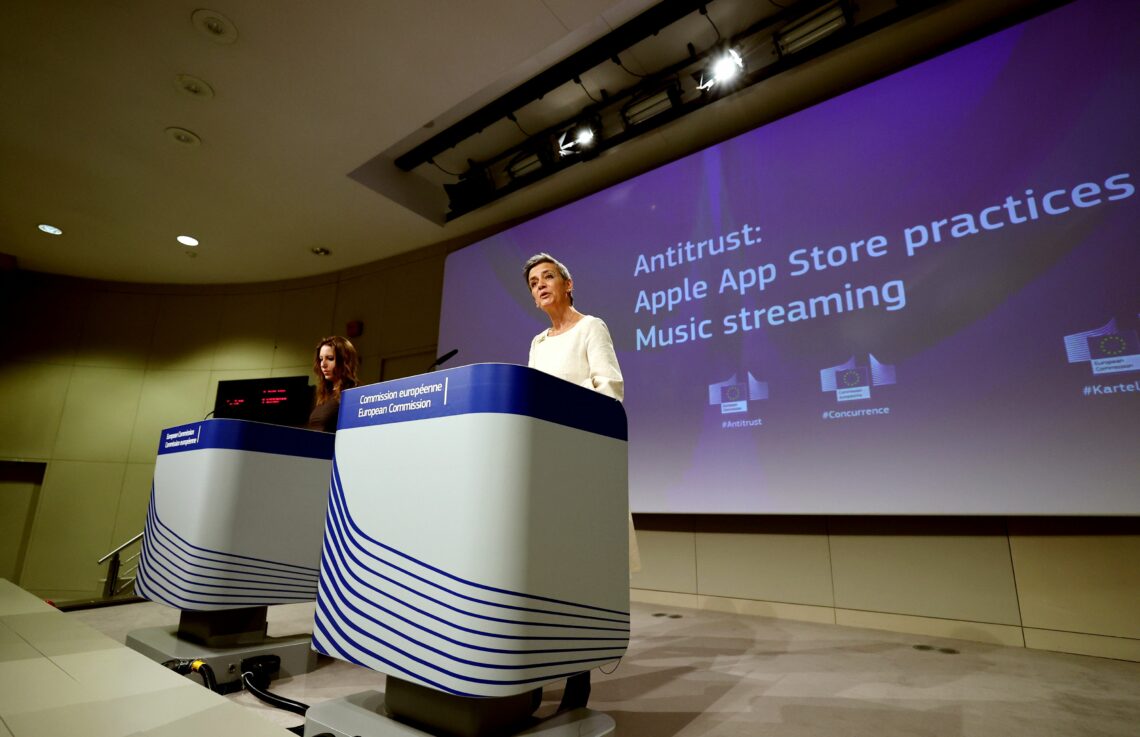The impact of antitrust demagoguery
Leaders in the West are ramping up antitrust activity, finding ways to scapegoat big, innovative companies for societies’ western economies woes. The move correlates with a rise in antitrust policies and the desire to harmonize global taxation.

In a nutshell
- Antitrust policies are a part of the Biden agenda
- Europe is also taking on large corporations
- Innovative companies could move to friendlier locations
Despite much drumbeating, it is still not entirely clear how the administration of United States President Joe Biden will overhaul the major economic policies of the Trump era. Profligate spending, easy monetary policy and trade restrictions are still in place. The list also includes antitrust enforcement, another key source of market distortion, though sometimes neglected by mainstream media.
Recent appointments to the U. S. Federal Trade Commission and the Department of Justice – both offices are responsible for antitrust operations – show that President Biden believes large companies, especially in high-tech industries, are abusing their market power. Although former President Donald Trump was no friend of large corporations, President Biden plans to intensify action against them. The European Union will likely follow the current U.S. approach.
The recent initiatives to harmonize corporate taxation globally are part of this agenda and show that large corporations are one of Western anti-capitalists’ three main targets. The others are income inequality and global warming. This report examines today’s antitrust movement in this light and puts forward three possible scenarios.
Size matters
The driving force behind the economic policies is the persistence of anti-capitalist beliefs. These are built on the false claim that disappointing economic performance and personal failures result from unfettered free markets, which concentrate wealth in the hands of the luckiest and the greediest, depriving others of the benefits created by fair trade and technological advancement. This perception goes hand in hand with the idea that suitable regulation can restrain pernicious behavior and create a better world. Antitrust authorities play a crucial role in this narrative.
The very idea of ‘big’ is easily associated with that of market power and exploitation.
In recent years, antitrust legislators have focused their attention on three areas: company size, technological excellence and markups. The aversion toward size is purely ideological and is the prevailing factor. Size per se has nothing to do with ethics, but the very idea of “big” is easily associated with those of market power and exploitation. The impulse to fight large firms regardless of their efficiency and their ability to meet the buyers’ demands is supposed to justify regulation.
Companies do not vote, but consumers do, and public opinion needs to constantly hear that regulating big business amounts to transferring market power and wealth from evil sellers to exploited buyers. Bashing large corporations will not stop any time soon, with one important exception: state-owned or partially nationalized firms.
Consistent with the anti-capitalist creed, increasingly aggressive antitrust monitoring and intervention will lead to a fragmentation and weakening of big private business, and to the survival and possibly growth, of large corporations controlled by the state. In contrast with the traditional narrative, the true mission of modern Western antitrust policies has little to do with market power, but instead with the transfer of power from traditional shareholders to government bureaucrats.
The same process has been unfolding in finance and banking, although using different regulatory instruments and actors, like central bankers.
Tax on success
Antitrust agencies have also followed a second line of attack – when the size requisite applies – saying they must weaken or abolish “barriers to entry” other than those provided by legislation (such as licenses). The authorities are unhappy when large companies enjoy a competitive advantage due to successful products and efficient production processes that their competitors are unable to imitate.

The standard complaint boils down to arguing that the big companies’ success is an unfair barrier to entry and that other, struggling producers should have access to the winners’ blueprints and be guaranteed a minimum market share. It is tantamount to claiming that being innovative and efficient is unfair, which supposedly explains antitrust intervention against the high-tech winners.
Although the antitrust authorities have no power to tax, by regulating how one producer can make use of his winning insights, they behave as if they were taxing cutting-edge innovation and efficiency. In this case, the “tax” would no longer benefit the state treasury and finance public expenditure. Regulation is equivalent to a transfer to less able producers at the expense of all the innovative ones. Most consumers naively rejoice at lower prices, but they would probably be less enthusiastic if they realized that the tax on technological excellence ultimately lowers productivity and living standards.
‘Fair profits’
Antitrust authorities’ third target is markups. They believe that companies should sell their products at fair prices, which, in turn, involve fair markups and profits. Unable to assess what a fair price is, antitrust authorities resort to a shortcut, claiming that a fair price is one that allows fair profits, and that profits are fair if they are not significantly higher than the average rate of profits for the industry. The remuneration for risk-taking and entrepreneurial insights is totally ignored, consistent with an ideological bias of which central planners would undoubtedly approve.
The driving force behind the antitrust rhetoric is the anti-capitalist narrative against large corporations.
Again, this complaint only applies to large companies, while the others can be as “unfair” as they wish – as long as they pay taxes.
To summarize, the main driver behind the antitrust rhetoric is the anti-capitalist narrative against large corporations (the symbolic representation of market power) and significant markups (the evidence of exploitation). By dismantling large producers and squeezing markups, high-tech companies that need considerable margins to absorb the cost of innovating and the risk of failure have suffered and will suffer more in the future. Moreover, business projects that could have challenged the incumbent producers and sped up technological advancement may never see the light of day.
Scenarios
In this context, there are three possible scenarios. One is a situation in which large profitable businesses negotiate their survival by offering more money to the state through taxes. It should not take much for governments to realize that by weakening large companies and squeezing their profitability, they risk losing significant tax revenue.
This view would help explain the lack of opposition by large firms to the recent maneuvering on corporate tax harmonization. One might conclude that taxation on big tech will rise, and antitrust pressure ease. The current, more aggressive antitrust approach would be a way of persuading big tech to refrain from tax avoidance. The operational problems with enforcing corporate tax harmonization on a global scale would encourage the authorities to pursue this strategy.
A second scenario is one in which big tech refuses to negotiate and migrates to friendlier shores, leaving Western regulators empty-handed. Although this may sound like a tempting option, it requires the new locations to be powerful, reliable and stable. Countries will need geopolitical clout to resist the pressure to adhere to global harmonization. Russia and China would meet this requirement.
Reliability relates to the risk that the new location could turn out less hospitable than anticipated and that future trade tensions lead to discrimination against producers based there. It is no accident that President Biden has not done much to normalize commercial relations with Russia and China and considers delocalization unfair.
The third and most likely scenario is one in which the structure of the high-tech industry evolves. In this case, the West will end up marginalized in production where efficiency requires large firms, like in high tech. Other parts of the world would dictate the pace of technological progress. This does not mean that the U.S. and Europe will fall behind across the board. Much will hinge on their educational systems and their ability to promote entrepreneurs who build innovative companies (which will, however, later be bought by non-Western big tech firms). These firms will then transform the innovations into production blueprints and
Today, cheap money and the low cost of raising risk capital have slowed this process by allowing Western companies to reduce their costs and stay alive. Yet, the process of marginalization might gain speed when financial markets come back to normal, and investors hesitate to support companies that are held hostage by antitrust demagoguery.






